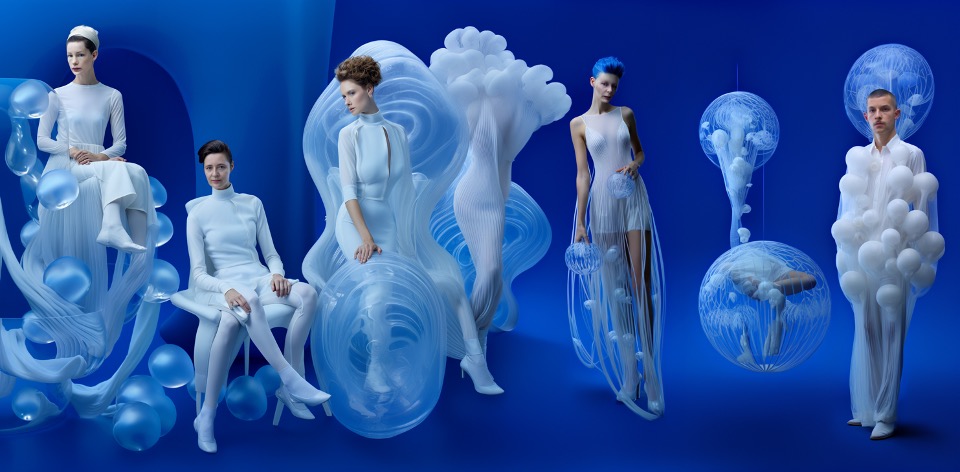Ocean Arts and A Blue Feminist Posthumanities for Cultivating Sustainable Futures at the Edge of the Sea
All through the extended history of Earth, the coastline has been a zone of unrest where waves and tides have forged life and land on this planet. Oceanic algae, once terraforming Earth into a breathable planet, still produces most of our oxygen. The edge of the sea remains a strange and beautiful place, as marine biologist and science writer Rachel Carson remarked with all its wondrous creatures in mind (1955/1998, The Edge of the Sea). Low-trophic marine zones, with kelp and other macro-algae (seaweeds), oysters, mussels and sea urchins, provide a host of benefits to various organisms, humans included, in providing many species with sanctuary and mitigating the eutrophication of the sea. Comparing this zone, the wrack zone, to the forests, Charles Darwin (1839, Voyages) observed on the sheer “number of living creatures of all Orders whose existence intimately depends on kelp”, and warned of the insurmountable effects should it perish.”

Today, submerged kelp forests, seaweed wrack zones and mussel beds are receding with the warming ocean waters of climate change. They slowly perish however nutritious and protective they are for many species, including humans, while some other marine species migrate to new places, become alien or intrusive species. The seas are changing fast due to human induced eutrophication, acidification and toxic waste dumped at sea. In dire times of environmental degradation and climate change, it is about time we turn our attention and appreciation to such low-trophic creatures and to the tidal zone of mariculture, as in this postdisciplinary arts and humanities project.
This project started out from environmental humanities research on the Baltic Sea and its multispecies futures while harbouring a military archive of dumped toxic waste (chemical agents, munition and whole war ships released to the sea). How for instance seals, people and birds are affected in the marine encounter with corroding mustard gas cannisters were explored in a paper (“Fathoming Chemical Weapons in the Gotland Deep”) with Astrida Neimanis, Aleksia Neimanis and Cecilia Åsberg.
The project took on a new life at the Kelp Congress in Svolvaer 2019, Lofoten International Art Festival, it took on saltier waters and a new focus, the multispecies communities of seaweeds and kelps.
In new constellations, working with marine biologists at Kristineberg Marine Research Centre, KTH and Gothenburgh University, with artists like Cooking Sections (Daniel Fernández Pascual and Alon Schwabe, with activists like Anne-Marie Melster (We are Ocean; ArtPort) and a range of blue humanities and eco-and bio art scholars, the project is in constant permutation with The Posthumanities Hub.
Together with artist Signe Johannisson and Art Lab Gnesta, we submerged ourselves in the local swamp for the purpose of presenting multispecies futures research at the international Environmental Humanities conference at KTH in 2020. Practice-led types of environmental humanties, oceanic and queer eco arts, have been part of our sea edge research over the years.
We have hosted several on-site workshops, like End of the Sea? Art and Science for Multispecies Futures (2021), and Sea Side Arts and Low Trophic Imaginaries (2021), and productive collaborations. These have generated a series of publications on low trophic theory and environmental violence by philosopher Marietta Radomska and Cecilia Åsberg, a special issue of Journal of Agricultural and Environmental Philosophy on Sea farming and feminist blue humanities, edited by Jesse Peterson and Cecilia Åsberg, OA-essays like Staying in the Wrackzone by Cecilia Åsberg, and the oceanic arts PhD project Coastline Culture: Imaginations and Emergencies at the Feminist Borderlands of Coastlines, Corals and Kelps by curator and feminist blue posthumanities scholar Caroline Elgh at Linköping University, Gender Studies, and the Posthumanities Hub.
The Posthumanities Hub has hosted several international webinars on the topic, e.g., Oceanic Humanities for the Global South. In the fall of 2023, we hosted webinars inflected by the hydrosexual and eco-sexual art movement, the Blue Humanities Archive, brine shrimp, the Deep Sea Babies congress in Krakow, Poland, and the works of Ewelina Jarosz (@underwater_activist), Justyna Górowska (@wetmewild) and sound artist Agata Polak.